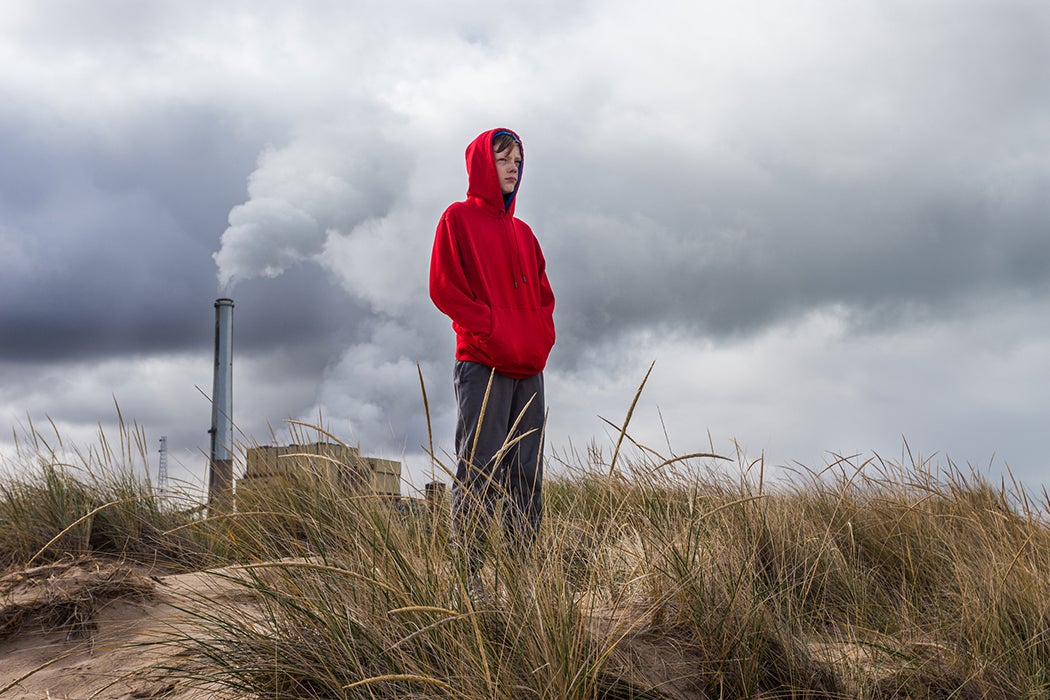As coverage of Earth’s climate emergency increases, so does a worrying side effect—anxiety. Specifically, eco-anxiety, described by the American Psychology Association as “the chronic fear of environmental cataclysm that comes from observing the seemingly irrevocable impact of climate change and the associated concern for one’s future and that of next generations.”
According to psychologist and scholar Maria Ojala, young people are overwhelmingly worried about the climate, and the burden of “solving the problem” appears to fall on their shoulders. Surveys in many different countries show that young people worry about climate change, even as their lifestyles “are often no more sustainable than those of older age groups.” How can this gap between concern and engagement, which Ojala notes as particularly wide among the young, be reconciled?
Ojala’s reseach focuses on Sweden, a country that’s likely to avoid the most devastating impacts of climate change, such as droughts, heatwaves, and climate-driven poverty. However, the lifestyles of people in Sweden, as in many similar economically advantaged countries, contributes the most to climate change. This distance between impact and lifestyle leads young people to worry not so much about themselves, but rather, about the effect climate change will have on others. Writes Ojala, “the climate threat is not foremost related to self-focused worry but rather to concern about the wellbeing of others (for example, future generations, people living in economically deprived countries and the natural world). It is a worry mixed up with guilt.”
This mixture of worry and guilt presents a challenge in coping, and because the young are not a monolith, Ojala documents several different coping strategies. Some younger Swedes seek to de-emphasize the problem, ignoring its severity in an attempt to avoid negative feelings or to keep peace with parents who may not believe in climate change. This strategy was most common among young boys and speaks to their sense of not having the ability to influence the problem.
Another common coping mechanism centers on the alleviation of negative emotions. Some young people turn their attention to absolutely anything else to avoid thinking about climate change. Keeping busy with other activities, avoiding the news, or refusing to listen to discussions of the topic allows them to distance themselves from negativity. This avoidance technique is often found in older groups as well.
More common with girls were problem-focused strategies: they embrace the worry and change their lifestyles to seek to remedy the problem. While climate change is a huge, all-encompassing issue, some young people will stop eating meat, quit driving, or engage in activism to channel their worry into positive change. Amongst the three coping strategies, problem-focused was the most burdensome, leaving societal problems in the hands of young people.
Weekly Newsletter
Ojala suggests that alternative strategies are needed. Meaning-focused strategies that promote constructive hope are essential. “Hope can help [young people] confront the problem and bear the burden of taking on climate change without becoming overwhelmed.” And collective engagement on environmental issues could unite concerned young people, helping them to support one another while working toward addressing the climate crisis.
A key component in this strategy is adult engagement, ensuring young people feel supported in their worries. More intergenerational spaces are needed to think and combat the climate crisis. Concludes Ojala, “It is only then that we can go beyond piecemeal behavior change and prepare in a more profound way for the societal transformation that climate change will bring.”







